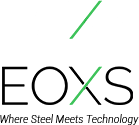Economic Indicators and Industrial Activity
Impact: Economic growth rates and industrial production levels directly influence metal demand, especially in construction, manufacturing, and infrastructure sectors.
Trends: Monitor GDP forecasts, industrial output reports, and purchasing managers’ indices (PMI) to gauge demand trends.
Sector-Specific Demand Drivers
Automotive and Transportation
Impact: Demand for metals like steel and aluminum fluctuates with automotive production cycles and transportation infrastructure investments.
Trends: Shifts towards lightweight materials (aluminum alloys, high-strength steels) due to fuel efficiency regulations and electric vehicle (EV) adoption.
Construction and Infrastructure
Impact: Building construction, infrastructure projects, and urbanization drive demand for structural steel, copper wiring, and other metals.
Trends: Sustainable construction practices, smart cities initiatives, and infrastructure development plans impact metal demand patterns.
Manufacturing and Industrial Production
Impact: Manufacturing activity drives demand for metals across machinery, equipment, and consumer goods sectors.
Trends: Adoption of automation, Industry 4.0 technologies, and digital transformation influence metal usage in industrial applications.
Supply Chain Dynamics and Trade Flows
Supply-Side Factors
Impact: Production capacity, raw material availability, and mining output affect metal supply dynamics.
Trends: Geopolitical risks, trade policies, and environmental regulations impact global supply chains and metal prices.
Trade and Imports/Exports
Impact: Global trade flows and tariff policies influence metal prices, supply availability, and market competition.
Trends: Shifts in trade agreements, tariffs on imported metals, and regional trade bloc dynamics affect market demand and pricing.
Technological Advancements and Innovation
Metal Substitution and New Materials
Impact: Advances in materials science drive demand shifts towards new alloys, composites, and non-traditional metals.
Trends: Exploration of lightweight materials, high-performance alloys, and sustainable metal solutions shape future demand trends.
Digitalization and Industry 4.0
Impact: Adoption of IoT, AI, and automation technologies in manufacturing optimize production processes and influence metal consumption.
Trends: Smart manufacturing initiatives, predictive maintenance, and digital supply chain integration impact metal market demand patterns.
Environmental and Sustainability Factors
Regulatory Compliance
Impact: Environmental regulations and sustainability goals influence metal production methods, recycling rates, and market demand.
Trends: Increased demand for eco-friendly metals, recycled content, and carbon footprint reduction strategies drive market shifts.
Market Sentiment and Investor Confidence
Commodity Price Trends
Impact: Fluctuations in metal prices, futures markets, and investor sentiment influence market dynamics and demand patterns.
Trends: Price volatility, hedging strategies, and market speculation affect decision-making in metal procurement and inventory management.
Understanding metal market demand requires a holistic approach that considers economic indicators, sector-specific drivers, supply chain dynamics, technological advancements, regulatory factors, and market sentiment. By monitoring key metrics and identifying emerging trends, stakeholders can make informed decisions, mitigate risks, and capitalize on opportunities in the competitive global metals market.




